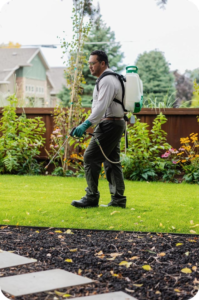No one wants to see creepy crawlies or rodents swarming in their home. However, a fly swatter or store-bought traps may not be enough to deal with a pest infestation. Contact Pest Control Columbia MO now!
Natural forces like climate and availability of food and water can affect pest populations. Preventative pest control strategies can help to reduce the overall number of pests in your home and eliminate the need for costly treatment options.

Pest identification is the first step in controlling a pest problem. It helps you understand what pests are attacking your crops and why they are doing so. Correct identification is also important for planning a control strategy.
Start by examining the pests closely, noticing physical characteristics. Then, compare the characteristics to photos in a pest identification guide. You can find many insect and rodent identification guides online and in printed resources.
Some pests are more specialized than others, so you may need to consult multiple sources to confirm your findings. Once you have a positive identification, it’s time to plan your control strategy. Consider how to prevent the pests from getting back into your crop and re-infesting it. Also think about what methods are best for killing the pests and removing them from the area without harming people, other plants, pets or wildlife.
Once you’ve identified a pest, you can determine its biology and basic life history to identify the type of management approach that will be most effective. For example, knowing what crops a pest typically attacks can help you focus on those crops when scouting, to avoid unnecessarily applying pesticides. Knowing whether a pest is continuous, sporadic or migratory can also help you determine an appropriate control strategy.
Identifying the type of pest you’re dealing with can also help you make decisions about cultural practices, tools or even pesticides to reduce or eliminate them. Suppression is the goal in most pest situations, reducing populations to a level that doesn’t damage the crop or cause unacceptable harm. Prevention is the long-term objective, preventing the population from reaching damaging levels in the future.
To prevent pests from entering your home, examine regularly for possible entry points. These include cracks in the wall, crevices around doorways and windows, vents, soffits and other areas that may provide a way for pests to enter your home or business. You should also regularly inspect firewood, compost piles, and stored collections for signs of pest activity. Proper sanitation, managing moisture, removing clutter and sealing entry points are other prevention tactics.
Prevention
Preventing pests before they occur is the most economical way to control them. Pest prevention is usually a combination of environmental changes and treatment strategies. This includes properly storing and disposing of food, waste and other materials; cleaning surfaces and floors; and removing weeds and debris around structures. It also includes regularly sweeping and vacuuming floors, wiping down counters, and sanitizing areas where food is handled.
All pests require food, water, and shelter to thrive. Generally, reducing the availability of these resources will eliminate their attraction to and use of structures. Food should be stored in sealed containers, and garbage cans should be removed from the property regularly. Overgrown weeds and grass should be cut and maintained to deny hiding places, food and moisture. And, to eliminate entry points into buildings, caulking cracks and crevices is essential.
While preventive measures will reduce the occurrence of most pests, they may not be enough to address existing infestations. This is why it is important to contact a pest control professional at the first sign of a problem. Pest control technicians will have the tools and experience necessary to eradicate current infestations and prevent future ones from occurring.
Pests are a common nuisance in homes and businesses, but they can also cause serious damage and health risks. It is critical to prevent pests before they invade your home or business. This will help to protect your property, employees, customers and inventory. A successful pest prevention program is a continuous one and requires ongoing monitoring and inspections for signs of pest activity and damage. The type of pest and the frequency of inspections will determine the type of preventive measures that are required.
Treatment
Many people have a knee-jerk reaction when they see pests: “I need to get rid of them!” But before reaching for the insect spray, consider whether you really need to kill all the pests or just reduce their numbers. Often, the answer is no. The goal of pest management is to keep damage below a tolerable level without disrupting the ecosystem, so that beneficial insects can do their job and harmful organisms do not overrun the environment.
Physical and mechanical controls kill or block a pest directly or make the environment unsuitable for the organism. For example, traps for rodents, mulches for weed control, and barriers such as screens can exclude pests from areas where they cause problems. Physical methods are usually quick to work, but may require human intervention (setting or removing the trap, for example).
Chemical controls kill or affect the abundance of pests by applying substances that affect their body systems or behaviour. They can be natural, such as pyrethrins derived from chrysanthemum flowers or man-made, such as the organophosphate pesticide malathion or the bacterium Bacillus thuringiensis (BT). These chemicals can also have indirect effects on pest abundance by acting as nerve toxins for insects and mammals, interfering with reproduction or releasing pheromones to interfere with breeding behavior.
While these chemicals can be effective, they can also pose health and environmental threats when used incorrectly. Make sure the pesticide you choose is designed for the target pest, use only the amount recommended on the label and always follow safety instructions carefully.
In addition to physical and mechanical control measures, you can improve the habitat where pests live by reducing the supply of food or shelter, removing obstacles to movement and changing the soil condition. This is known as integrated pest management, or IPM. It is the preferred method of pest control in gardens, agricultural settings, forestry and other wildland areas. It is a step-wise approach that uses prevention and monitoring along with treatment when necessary. It’s the best way to prevent pests from damaging your property and threatening our shared environment.
Maintenance
Even after property managers and their maintenance crews have done everything they can, buildings still may fall victim to pest infestation. Pests are considered a nuisance when their numbers are high enough to cause damage, or impact building occupants by spreading disease, contaminating food sources and creating distractions. Eliminating all pests is rarely a practical goal, so managing pest populations to prevent the occurrence of significant damages and negative impacts requires the use of an integrated approach to pest control.
Managing pests means denying them shelter, food and water. It is important to repair and seal leaks to prevent ants, termites, rats and other insects from invading buildings. It is also crucial to remove trash piles before rodents chew their way in, and to discard old shingles before termites eat them. Drain line blockages, grease pit pumping, and organic build up removal are also important parts of a comprehensive pest management program.
Monitoring
There’s a good chance that the facility you work at uses monitors to keep track of things like allergens, metal contaminants and even biologic samples. And, of course, there are monitors for pests too. Most facilities will have a third party pest management company that handles this part of the job for them, but some still have their own in-house team of people who manage this service.
Regardless of who is managing the monitoring process, it’s important that there is a strong commitment to it. As we mentioned above, catching pests early on is key to saving time and money in terms of the cost of controlling them. Monitoring for pests is an essential part of the integrated pest management (IPM) process and should be done on a regular basis to help ensure that a full pest infestation never occurs.
IPM is a system of practices that promotes the use of natural enemies, cropping patterns and cultural controls rather than just the use of chemicals to control pests. Monitoring is an important component of this strategy as it helps us determine when to use chemical control and what types of chemicals will be most effective. This also helps to prevent the development of resistance to pesticides.
Monitoring can be as simple as using a trap or glue board to catch the pests themselves. Traps or glue boards should be placed in the areas where the pests are most often found, such as in the attic, basement or any rooms that might have a lot of moisture like bathrooms and kitchens. The traps or glue boards should be checked regularly for the presence of pests. When the traps or glue boards become dusty or dirty or when they are crowded with pests, new ones should be put out.
The information collected from the monitoring process is then used to develop a plan for controlling the pests. This could include prevention, suppression or eradication depending on the situation and the impact of the pests. It is also important to determine thresholds – the level of pest populations at which we have to take action to prevent unacceptable damage or injury.





